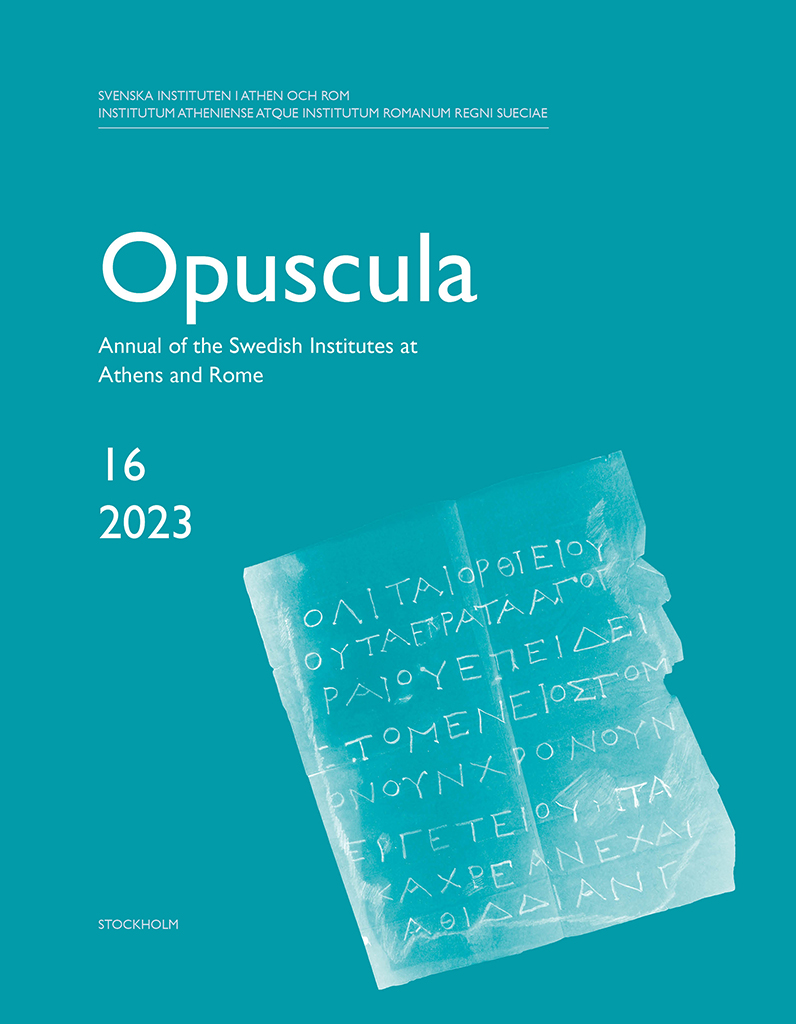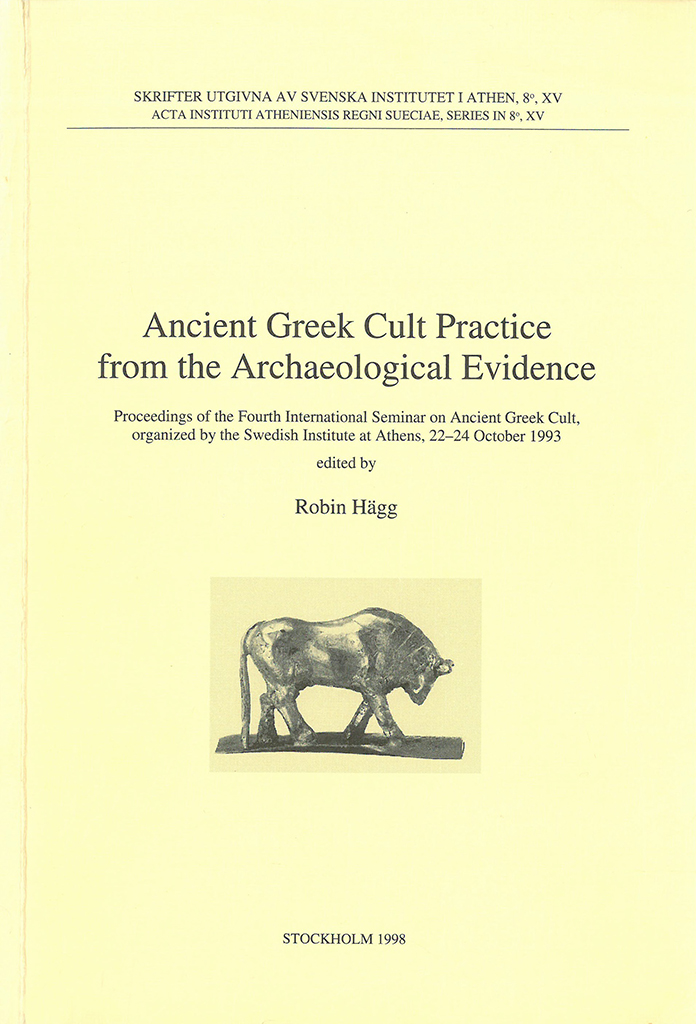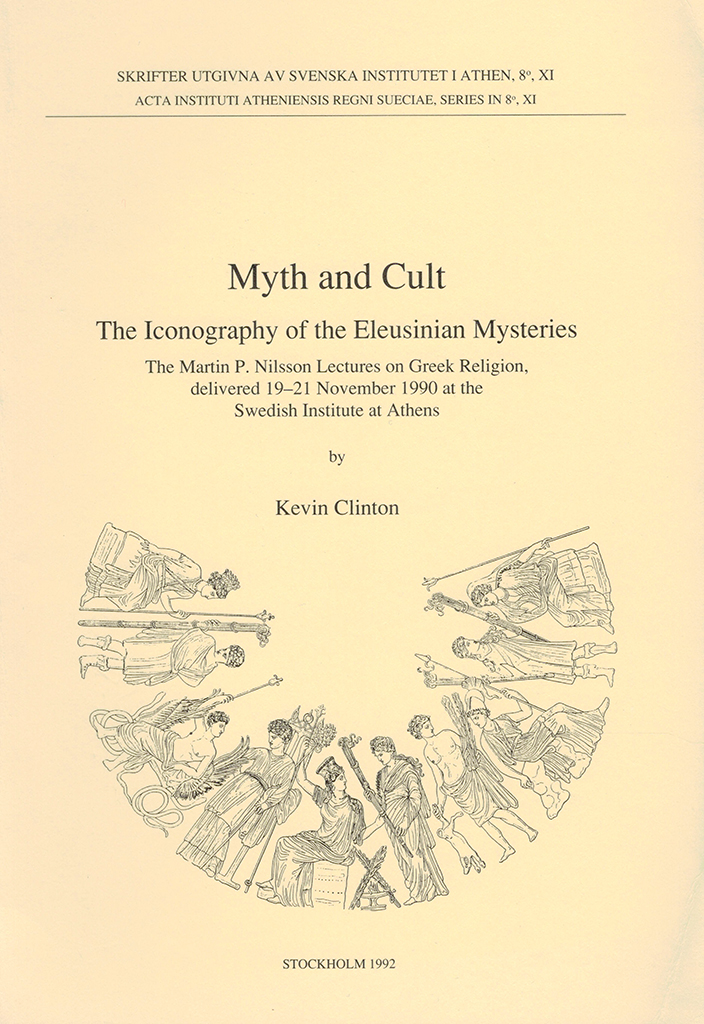Opuscula is published by the Swedish Institutes at Athens and Rome, with the aid of a grant from the Swedish Research Council. Distributed by Eddy.se AB. View journal at ERIH PLUS. All content available with open access. Statuettes of pregnant sows from Knidos. New light on the cult of Demeter By Linda Talatas Abstract Four marble statuettes of pregnant swine were found in the sanctuary of Demeter at Knidos over 160 years ago, but have been largely overlooked in previous research, even though the connection between pigs and Demeter has long caught the attention of scholars, especially in relation to the piglets required for the celebration of her Eleusinian Mysteries. The statuettes raise several questions. Why make sculptures of pregnant sows? Who dedicated those offerings, and in what context? Are they related to the sacrifice of pregnant sows? And ultimately, why pregnant sows for Demeter? The article starts with a presentation of the four marble sows from the sanctuary of Demeter at Knidos, followed by a more general examination of the archaeological evidence for pig, piglet, and pregnant sow representations at Greek sanctuaries. I will then explore the epigraphical evidence for pregnant sow sacrifices, all of which is in connection…
Published by the Swedish Institute at Athens. Distributed by Astrom Editions. Ancient Greek cult practice from the archaeological evidence. Proceedings of the Fourth International Seminar on Ancient Greek Cult, organized by the Swedish Institute at Athens, 22–24 October 1993 Edited by Robin Hägg Abstract A collection of thirteen papers, read at an international seminar in Athens, that deal with various phenomena of Greek cult practice, analyzing the information gained from the archaeological evidence. Among the special topics discussed are cult practice in the acropolis sanctuary of Minoa on Amorgos, the sanctuaries in the Artemision of Ephesos, the role played by osteological analysis in the understanding of Greek sacrificial practice, the interpretation of animal bones and fire traces connected with ritual feasting in the Herakleion on Thasos, ritual and society in Early Iron Age Corinthia, small dedications from the Archaic temple of Poseidon at Isthmia, altars in Greek hero cults, the early history of the sanctuary of Demeter and Kore at Eleusis, a sacrificial area near the sanctuary of Apollo Daphnephoros at Eretria, terracotta plaques and other finds from the sanctuary of Demeter and the Dioscouri at Messene, the interpretation of sickles in Greek sanctuaries, changes in votive practice from Classical…
Published by the Swedish Institute at Athens. Distributed by Astrom Editions. Myth and cult. The iconography of the Eleusinian Mysteries. The Martin P. Nilsson Lectures on Greek Religion, delivered 19–21 November 1990 at the Swedish Institute at Athens By Kevin Clinton Abstract Iconography serves as the starting part for the treatment of central aspects of the myth and cult of the Eleusinian Mysteries. The presence of the Mirthless Rock in artistic presentations, its location in the sanctuary, and its relation to the Callichoron Well provide a perspective for assessing the aetiological elements in the Homeric Hymn to Demeter and the relation of the Hymn to Eleusis. The Iconography of Eubouleus, Iakchos, and Eumolpos is established, and that of Triptolemos and Ploutos is discussed extensively. The importance of Eubouleus in artistic representations is seen to correspond to his importance in the Mysteries, and the identification of him in certain scenes reveals his function in the myth of the Mysteries. Discussion of his role in the Thesmophoria leads to an examination of the relation of the Mysteries to the Thesmophoria. The various roles of all these figures in artistic representations provide a basis for revised interpretations of several works of art, and…



